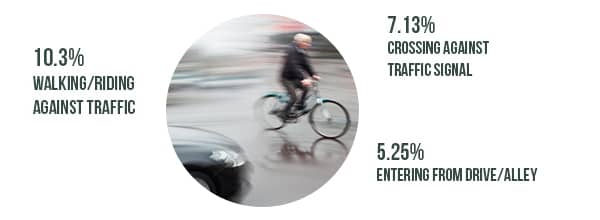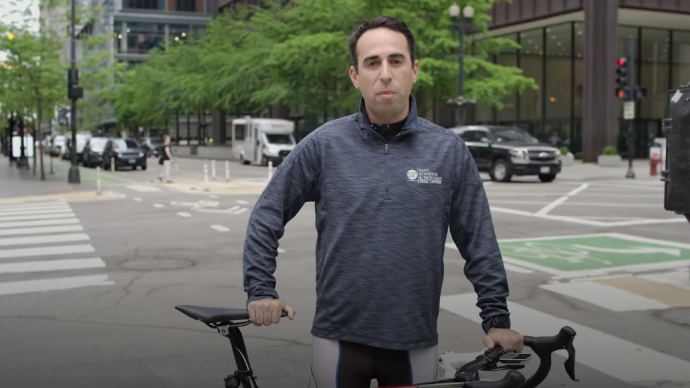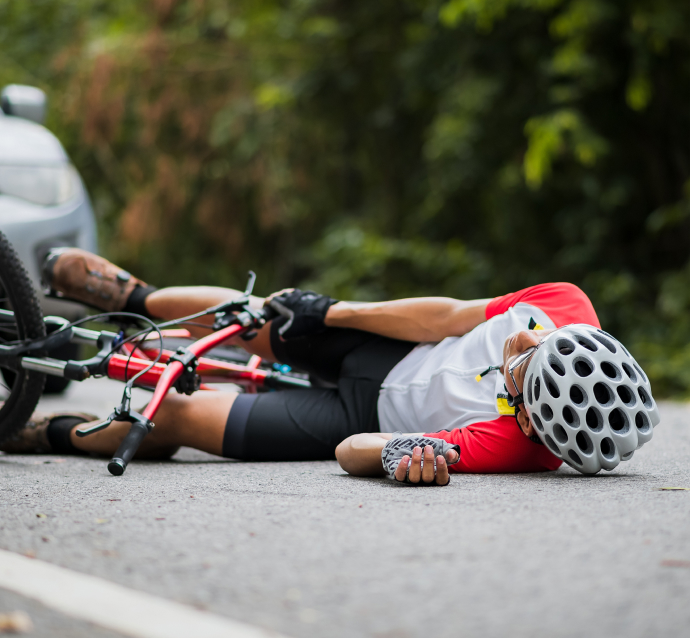Causes of Accidents Involving Bikes
A study by the Chicago Department of Transportation (CDOT) found that bicyclists’ actions contribute to a high number of crashes. Unfortunately, bicyclists often make poor decisions or careless maneuvers that harm themselves.
The study looked at Chicago crash data over a five-year period. Bicyclist actions led to 7,415 accidents over that period. The most common bicyclist actions that caused crashes were:

However, the same study found that negligent and reckless actions by motorists also are a major factor in Chicago. The study revealed that motorist actions caused 6,755 crashes over the five-year period, including:

Indeed, many bicyclists are injured or killed because motorists fail to pay attention to bicyclists or simply fail to respect their right to share the road. For instance, motorists can cause crashes by:
- Turning right in front of a bicyclist traveling in the same direction (“right-hook” collisions)
- Turning left into the path of an approaching bicyclist (“left-hook” collisions)
- Following a bicyclist too closely (“tailgating”)
- Pulling out of a driveway or parking spot without looking
- Racing through a red light or stop sign at an intersection in a bicyclist’s path
- Failing to give a bicyclist adequate space when passing
- Intentionally “buzzing” a bicyclist while passing (a type of “road rage”)
- Opening the door of a parked car as a bicyclist passes (“dooring”).
In many of these situations, the underlying cause of the crash may be the driver’s distraction such as talking or texting on a phone while driving or by the driver’s impairment due to alcohol, drugs or fatigue.
In addition to bicyclist and motorist actions, bike accidents can also be caused by dangerous road conditions, including potholes, deteriorating shoulders or obstructed views. In these situations, a government entity may be to blame.
Most Dangerous Areas for Cyclists in Chicago

A CDOT study that analyzed Chicago crash data over a five-year period found that around 55 percent of the city’s fatal and injury-causing bicycle accidents happen at intersections. A review of the study by DNAInfo.com identified the following to be the most dangerous intersections in the city for bicyclists:
| Area |
Intersecting Streets |
| Lincoln Park |
Fullerton Ave., Halsted St. and Lincoln Ave. |
| Bucktown |
Damen Ave., Fullerton Ave. and Elston Ave. |
| Wicker Park |
Damen Ave., North Ave. and Milwaukee Ave. |
| Logan Square |
Milwaukee Ave. and Fullerton Ave. |
| River West |
Chicago Ave., Halsted St. and Ogden Ave. |
|
Chicago Ave. and Milwaukee Ave. |
| Uptown |
Montrose Ave. and Lakefront trail entrance |
Additionally, the CDOT study revealed that streets within the Loop and diagonal streets that take traffic into the Loop have the highest number of non-intersection bike crashes.
These six stretches of road had the highest crashes-per-mile (CPM) rates:
| Street |
From |
To |
Length |
CPM |
| Milwaukee Ave. |
North Ave. |
Division St. |
0.7 |
70.1 |
| Clark St. |
Racine Ave. |
Fullerton Ave. |
1.6 |
48.6 |
| Milwaukee Ave. |
Fullerton Ave. |
Armitage Ave. |
0.7 |
48.1 |
| Halsted St. |
Diversey Pkwy. |
North Ave. |
1.5 |
29.9 |
| Damen Ave. |
North Ave. |
Chicago Ave. |
1.0 |
27.8 |
| Lawrence Ave. |
Ashland Ave. |
Sheridan Rd. |
0.8 |
25.2 |
The Chicago Tribune cited a survey that reached a similar result, finding that the most dangerous stretch of Chicago for cyclists was Milwaukee Ave. from North Ave. to Division St. This was based on the number of collisions, injuries, and fatalities.
Despite these dangerous areas, there are still plenty of safe places to ride in Chicago, including many streets with dedicated bike lanes. Check out this Chicago Bike Map from Chicago Complete Streets to find safe cycling areas near you. But there are still events that accidents happen in bike lanes.
Protecting the Rights of Victims in Illinois
Under Illinois law, bicyclists are granted the same rights as motor vehicle drivers as well as other rights that are unique to them. Bicyclists have the right to:
- Share the road – A bicyclist may use the road by staying as close as safety allows to the far right side. This means a bicyclist does not have to ride through gravel, broken glass or dangerously close to a curb in order to share the road.
- Ride side-by-side – Two bicyclists can ride side-by-side as long as it does not impede the normal, reasonable flow of traffic.
- Turn as vehicles or pedestrians – When turning at an intersection, a bicyclist has the right to use a crosswalk as a pedestrian. Motorists must yield to the bicyclist. A bicycle rider may also enter into a turn lane as a vehicle driver would. If turning as a vehicle, the bicyclist must use proper hand signals.
- Use sidewalks or crosswalks – A bicyclist may use a sidewalk unless prohibited by a local ordinance. When doing so, the bicycle rider must yield to pedestrians at all times.
- Enjoy a safe distance from vehicles – When a vehicle driver passes a bicyclist, the driver must leave at least three feet of space.
- Be free of harassment – A motorist in Illinois can face a misdemeanor or felony charge, in fact, if the motorist drives intentionally or recklessly close to a cyclist.
These rights must be protected. If a motorist violates a bicyclist’s rights and causes injury or death, the bicyclist and/or family members have the right to seek just compensation for all physical, emotional and financial harm the motorist has caused.


















